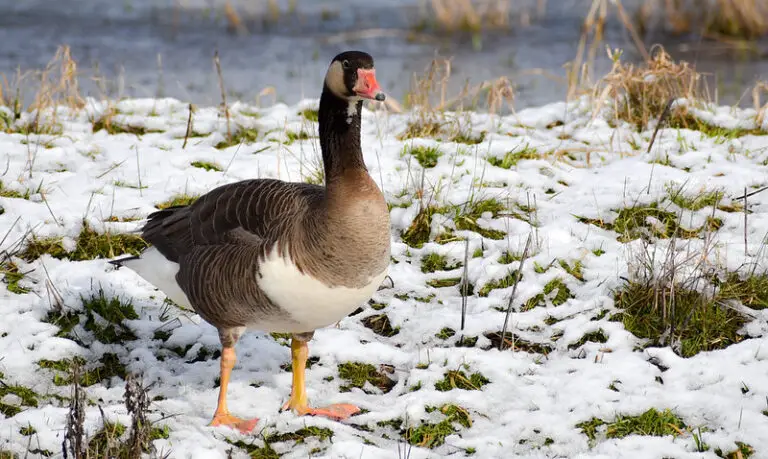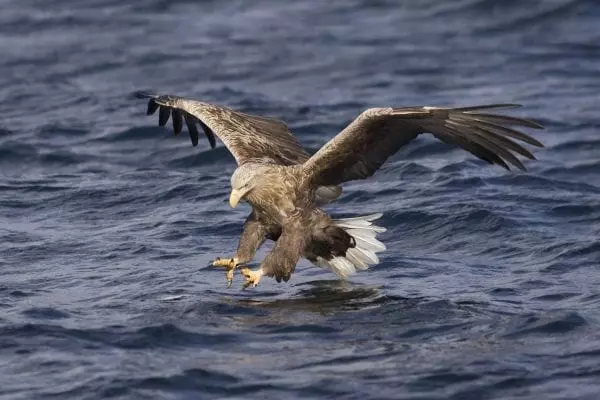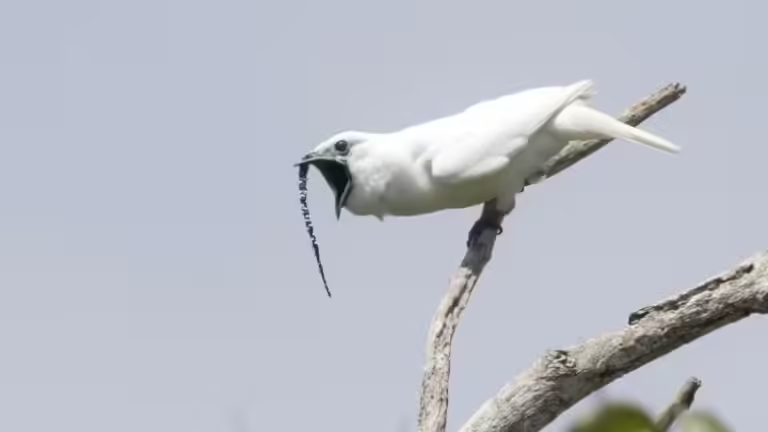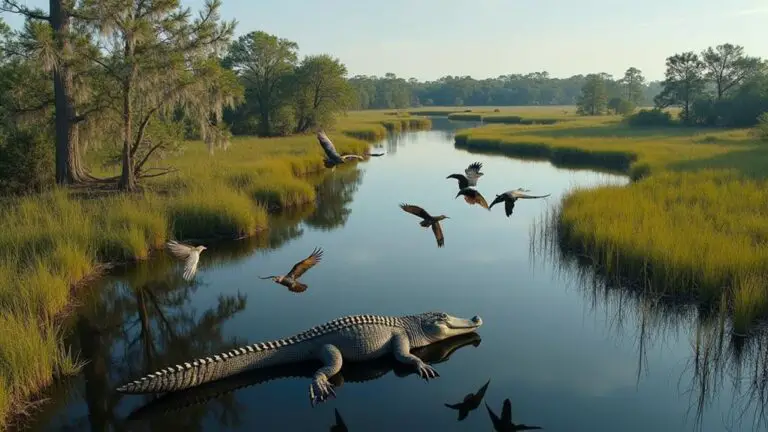Florida is home to some of the most awe-inspiring birds of prey in the world. From soaring eagles to stealthy owls, these majestic creatures play a vital role in the state’s delicate ecosystem. In this guide, we’ll explore the diverse species of Florida raptors, their habitats and behaviors, migration patterns, nesting and reproduction habits, feeding strategies, conservation efforts, and more. Whether you’re a seasoned birder or simply curious about these magnificent creatures, this guide will provide a fascinating glimpse into the world of Florida birds of prey.
The Diversity of Florida Raptors
Florida is home to a diverse range of raptors, with over 30 different species found throughout the state. These majestic birds of prey play an important role in the ecosystem, controlling rodent and insect populations and helping to maintain a balanced ecosystem.
The Hawk Species of Florida

There are several hawk species found in Florida, including the red-shouldered hawk, Cooper’s hawk, and sharp-shinned hawk. The red-tailed hawk is also a commonly spotted hawk species in the state. Hawks are known for their sharp talons and keen eyesight, which they use to hunt small mammals and birds.
The Eagle Species of Florida
Florida is home to two species of eagles: the bald eagle and the golden eagle. These majestic birds of prey are known for their impressive size and strength, with wingspans of up to 7 feet. Eagles primarily hunt fish, but will also prey on small mammals and birds.
The Falcon Species of Florida
Falcons are known for their incredible speed and agility, swooping down on prey from great heights. Florida is home to several species of falcons, including the peregrine falcon, which is one of the fastest birds in the world.
The Owl Species of Florida
Owls are nocturnal birds of prey that are often recognized by their distinctive calls. Florida is home to several species of owls, including the barred owl, great horned owl, eastern screech owl, and burrowing owl.
The Ospreys, Kestrels, and Vultures of Florida
Other notable raptor species found in Florida include the osprey, which hunts fish with its sharp talons, the kestrel, which preys on small mammals and birds, and the vulture, which feeds primarily on carrion.
Overall, the diversity of raptor species in Florida is a testament to the state’s rich natural heritage and the importance of conservation efforts to protect these magnificent birds of prey.
Habitats and Behaviors of Florida Raptors
Florida is home to a diverse array of raptors, each with their own unique behaviors and habitat preferences. Understanding these aspects can help bird enthusiasts better appreciate and observe these magnificent creatures.
Preferred Habitats
Florida raptors can be found in a variety of habitats, including forests, grasslands, wetlands, and coastal areas. Many species, such as the Red-shouldered Hawk and the Short-tailed Hawk, prefer to live in dense forests or woodlands, while others, such as the Crested Caracara and the Snail Kite, are more commonly found in open grasslands and wetlands.
Coastal areas are another favorite habitat for a few Florida raptors, such as the Osprey and the Bald Eagle, as they can easily catch fish from the sea.
Hunting Techniques
Florida raptors exhibit a wide range of hunting techniques, depending on their species and preferred prey. Falcons, such as the Peregrine Falcon and the American Kestrel, are known for their impressive aerial acrobatics and speed, allowing them to catch smaller birds in mid-air. Hawks and eagles, on the other hand, tend to hunt by perching on high branches or poles and swooping down on their prey, while owls rely on their sharp eyesight and silent flight to catch rodents and other small mammals.
Mating and Nesting Behaviors
Most Florida raptors are monogamous and mate for life. During the breeding season, they engage in elaborate courtship rituals, such as aerial displays and exchanging food gifts. They usually build their nests on high trees, cliffs, or man-made structures, such as cell phone towers or electrical poles. The nests are typically made of sticks and twigs and are lined with softer materials such as leaves and moss.
Once the eggs are laid, the parents take turns incubating them and caring for the hatchlings. The young raptors are usually dependent on their parents for several weeks, with some species, such as the Bald Eagle, taking up to three months to fledge.
Understanding the habitats and behaviors of Florida raptors can make bird watching and photography an even more thrilling experience. By being knowledgeable about their preferences and patterns, enthusiasts can get an up-close view of these magnificent creatures in their natural habitats.
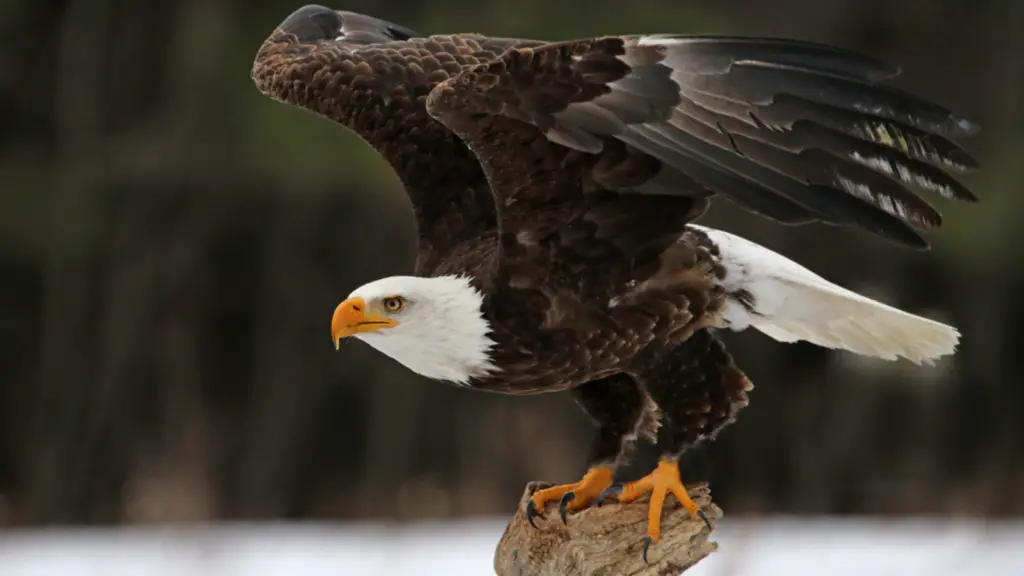
Migration Patterns of Florida Raptors
Many Florida raptors are migratory birds, which means they travel long distances between their breeding and wintering grounds. These seasonal movements are driven by a variety of factors, including changes in food availability, weather patterns, and breeding requirements.
Some of the most common migratory raptors in Florida include the broad-winged hawk, Swainson’s hawk, peregrine falcon, and osprey. These birds travel thousands of miles each year, often crossing over open waters and facing numerous hazards along the way.
Migration Strategies
Florida raptors use a variety of strategies to navigate their migrations, including visual landmarks, celestial cues, and magnetic fields. Scientists are still uncovering the specific mechanisms behind these remarkable abilities, but evidence suggests that many raptors use a combination of sensory inputs to stay on course.
During migration, raptors also tend to follow specific routes or pathways, known as flyways. These flyways typically follow major landforms, such as coastlines or mountain ranges, and provide raptors with important stopover sites where they can rest and refuel before continuing on their journey.
Threats to Migration
Despite their impressive abilities, Florida raptors face numerous threats during migration. One of the greatest dangers is habitat loss, as human development and land-use changes can disrupt flyways and critical stopover sites.
Other threats include collisions with power lines and wind turbines, exposure to pesticides and other chemicals, and climate change-related impacts such as altered weather patterns and sea-level rise.
Conservation Efforts
To protect Florida raptors during migration, conservationists are working to identify and conserve critical habitats and migration corridors. This includes efforts to establish protected areas and conservation easements, as well as partnerships with landowners to promote bird-friendly land management practices.
Conservationists are also developing new technologies, such as avian radar and thermal imaging cameras, to better understand raptor movements and inform conservation strategies. Through these and other efforts, scientists and conservationists hope to ensure the long-term survival of Florida’s remarkable raptor populations.
Nesting and Reproduction of Florida Raptors
Florida’s raptor species have unique nesting and reproduction behaviors adapted to their environments and lifestyles. Most raptors in Florida mate for life, and their breeding seasons coincide with the abundance of prey.
Mating Rituals
Raptors in Florida perform elegant aerial displays during courtship, which include high-speed dives, barrel rolls, and talon-locking. This behavior helps solidify pair bonds and establish territories. Once a pair mates, they will return to the same nesting site year after year.
Nest Construction
Raptors in Florida build their nests in various locations, such as on high trees, cliffs, and sometimes even on power poles. The nests are made of sticks, grasses, and other natural materials, and can reach up to 6 feet in diameter. Bald Eagles build some of the largest nests, and their structures can weigh over a ton.
Raising Young
Raptor chicks in Florida are born featherless and helpless, and parents take turns incubating the eggs and feeding their young. The chicks are fed a diet of regurgitated prey such as rodents, snakes, and small mammals. Once the young reach maturity, they venture out on their own, and some may take several years before they breed.
Feeding Habits of Florida Raptors
Florida raptors have adapted various feeding habits based on their hunting techniques and preferred prey. Some species, such as the osprey, primarily feed on fish, while others like the red-tailed hawk prefer small mammals like rodents.
Many Florida raptors are opportunistic hunters and will feed on whatever prey is available. The American kestrel, for example, will eat insects, small mammals, and even reptiles.
Some raptors in Florida, such as the peregrine falcon, are known for their high-speed diving attacks, which allows them to catch prey mid-flight. Other species, such as the great horned owl, use their keen hearing and stealth to hunt prey at night.
Most Florida raptors are carnivorous, but some species, such as the black vulture, will also scavenge for carrion. This adaptation allows them to survive and thrive in a range of environments, from urban areas to wilderness habitats.
Feeding Habits of Specific Florida Raptors
| Raptor Species | Prey | Hunting Techniques |
|---|---|---|
| Osprey | Fish | Dives into water to catch fish with talons |
| Red-tailed hawk | Small mammals, birds, reptiles | Perches in high places and swoops down on prey |
| American kestrel | Insects, small mammals, reptiles | Hovers in mid-air and dives down on prey |
| Peregrine falcon | Small- to medium-sized birds | High-speed diving attacks to catch prey mid-air |
| Great horned owl | Small mammals, birds, reptiles | Stealth and silent flight to ambush prey at night |
Understanding the feeding habits of Florida raptors is essential to appreciate their role in maintaining the ecological balance of the state. Their ability to adapt and survive in diverse environments is also a testament to their impressive hunting skills and evolutionary adaptations.
Conservation Efforts for Florida Raptors
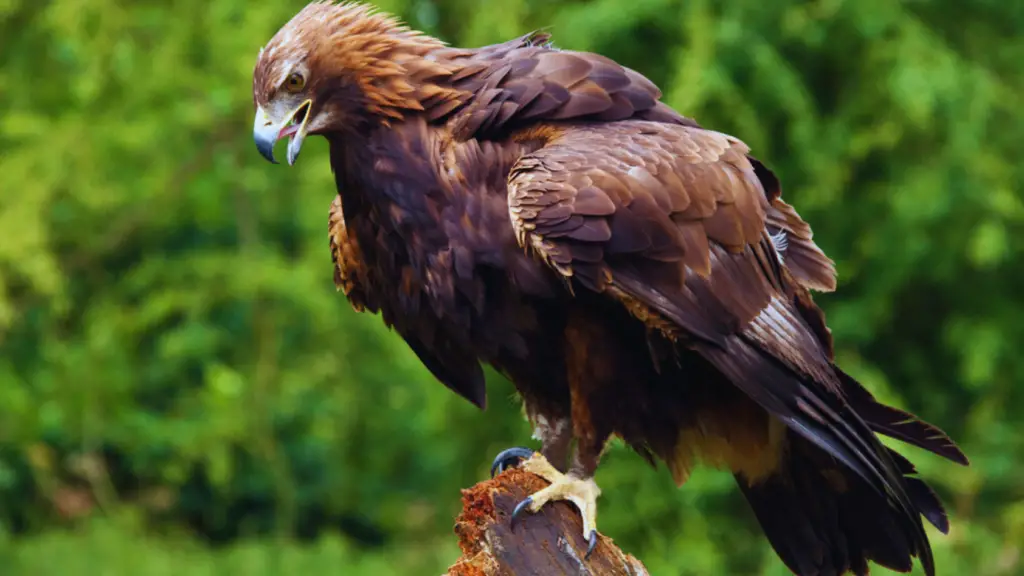
Florida raptors face numerous threats, including habitat loss, collisions with vehicles and buildings, and illegal hunting. As a result, several organizations have dedicated themselves to safeguarding these majestic birds.
Population Management
The Florida Fish and Wildlife Conservation Commission (FWC) monitors raptor populations across the state, using data to inform their management strategies. In some cases, the FWC may implement hunting restrictions, limit development in critical habitats, or provide artificial nesting sites to boost populations.
Research Initiatives
Scientists and researchers also play a vital role in protecting Florida raptors. By studying their behavior, migration patterns, and diet, researchers can identify potential threats and develop effective conservation plans. Several universities and non-profit organizations offer research opportunities for students and volunteers interested in studying raptors.
Rehabilitation Programs
When injured or sick raptors are found, rehabilitation centers offer medical treatment and care until they can be released back into the wild. The Audubon Center for Birds of Prey in Maitland and the Peace River Wildlife Center in Punta Gorda are just two of the many rehabilitation facilities in Florida that specialize in raptor care.
Conservation Organizations
Many organizations, such as the Audubon Society and the National Wildlife Federation, are dedicated to protecting raptors and their habitats. Through advocacy, education, and community outreach, these organizations raise awareness about the importance of raptor conservation and encourage individuals to take action.
Thanks to the efforts of these organizations and individuals, many raptor populations in Florida are now more stable. However, continued conservation efforts are crucial to ensure these iconic birds thrive for generations to come.
Photography and Bird Watching of Florida Raptors
Florida is a hot spot for bird photography and bird watching, with its diverse range of raptors making it a prime location for enthusiasts. Whether you’re a seasoned photographer or a novice birder, there are plenty of opportunities to observe these majestic birds in their natural habitats.
Photography Tips
Capturing stunning images of Florida raptors requires patience, skill and a bit of luck. Here are some tips to help you get the best shots:
- Get up early: The best time to capture birds in action is early morning when they are most active.
- Be prepared: Bring plenty of batteries, memory cards and lenses so you are ready for any shot that presents itself.
- Use natural light: Avoid using flash as it can startle the birds and create unnatural shadows.
- Be respectful: Keep a respectful distance from the birds and avoid disrupting their natural behavior.
- Practice, practice, practice: Take plenty of shots and experiment with different angles and settings to find what works best for you.
Bird Watching Hotspots
Florida boasts a number of bird watching hotspots where you can observe raptors in their natural habitats. Some of the top locations to visit include:
| Location | Raptor Species |
|---|---|
| Everglades National Park | Bald eagles, ospreys, peregrine falcons, red-shouldered hawks and more |
| Corkscrew Swamp Sanctuary | Great horned owls, barred owls, bald eagles, and more |
| Paynes Prairie Preserve State Park | Crested caracara, swallow-tailed kites, red-tailed hawks, and more |
Field Guides
If you’re new to bird watching, a field guide can be an invaluable tool for identifying raptors in the field. Some of the most popular guides for Florida bird watching include:
- The Stokes Field Guide to the Birds of North America by Donald and Lillian Stokes
- A Field Guide to the Birds of Eastern and Central North America by Roger Tory Peterson
- The Sibley Guide to Birds by David Allen Sibley
With these tips and resources, you’ll be well on your way to capturing stunning images and observing the incredible diversity of Florida raptors.
The Natural History of Florida Raptors
Florida is home to an incredible diversity of raptor species, each with their own unique adaptations and role in the ecosystem. The natural history of these birds of prey is a fascinating topic, encompassing their evolution, behavior, and relationship with their environment.
Raptors have been present in Florida for millions of years, with some species evolving to thrive in specific habitats such as swamps, pine forests, and coastal areas. Their sharp talons and beaks, keen eyesight, and powerful wings allow them to hunt and survive in diverse environments.
Florida raptors play a significant ecological role in controlling populations of small mammals and birds, serving as top predators in their food chains. Additionally, many species of raptors are indicators of the health of their environment, as they are sensitive to changes in habitat quality and population levels of their prey.
Over the years, human activity has had a significant impact on Florida raptor populations, with habitat loss, pollution, and hunting posing major threats to their survival. However, efforts to protect and conserve raptors have led to positive outcomes, with some species making a comeback in recent years.
As symbols of strength, power, and freedom, Florida raptors have captured the imaginations of people for centuries. Their natural history is a vital part of the state’s biodiversity and cultural heritage, showcasing the beauty and complexity of the natural world.
FAQs about Florida Birds of Prey
If you’re new to the world of Florida raptors or simply curious about these fascinating birds of prey, you may have some questions. Here are some frequently asked questions and their answers:
What is a bird of prey?
A bird of prey, also known as a raptor, is a type of bird that hunts and feeds on other animals. These birds have several physical adaptations that make them excellent hunters, such as sharp talons, powerful beaks, and keen eyesight.
Which raptor species are native to Florida?
Florida is home to a diverse array of raptor species, including hawks, eagles, falcons, owls, ospreys, kestrels, and vultures. Some of the most common species found in Florida include the bald eagle, red-tailed hawk, peregrine falcon, great horned owl, and turkey vulture.
Where can I find Florida raptors?
Depending on the species, Florida raptors can be found in a variety of habitats, including forests, wetlands, grasslands, and coastal areas. Some of the best places to observe raptors in Florida include national parks, wildlife refuges, and nature preserves.
How do Florida raptors hunt?
Florida raptors use a variety of hunting techniques, depending on their species and the type of prey they are targeting. Some species, like eagles and ospreys, hunt by swooping down from the sky and snatching fish from the water. Others, like hawks and falcons, hunt by chasing after their prey at high speeds and using their sharp talons to grab onto them.
Are Florida raptors endangered?
While some raptor species in Florida are considered threatened or endangered, many populations have rebounded in recent years thanks to conservation efforts. Organizations like the Audubon Society and the Florida Fish and Wildlife Conservation Commission work to protect and conserve raptor populations throughout the state.
Can I observe Florida raptors from a distance?
Yes! Many Florida state parks and wildlife refuges offer guided bird-watching tours that allow visitors to observe raptors and other bird species from a safe and respectful distance. Remember to bring binoculars and a camera to capture the stunning sight of these majestic birds in action.
What should I do if I find an injured Florida raptor?
If you come across an injured or sick raptor in Florida, it’s important to contact a licensed wildlife rehabilitator as soon as possible. Do not attempt to handle the bird yourself, as raptors have sharp talons and beaks that can cause serious injuries.




